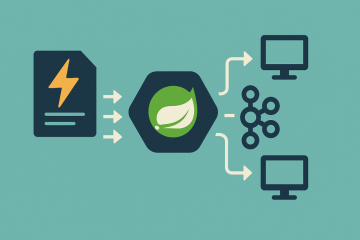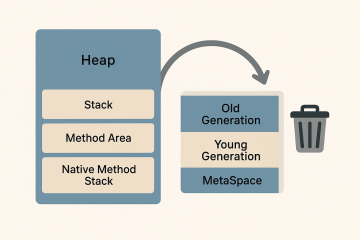As microservices scale in complexity, debugging issues across multiple services becomes increasingly difficult. Traditional logging falls short when tracking a request across boundaries. This is where distributed tracing plays a crucial role.
In this blog, we’ll explore how to implement distributed tracing in Java microservices using OpenTelemetry, an open-source observability framework backed by the Cloud Native Computing Foundation (CNCF). You’ll learn how to capture spans, export traces, and integrate with popular tracing tools like Jaeger or Zipkin.
What Is Distributed Tracing?
Distributed tracing provides visibility into the flow of requests across service boundaries. It answers key questions such as:
- Where is latency introduced?
- Which service failed?
- What is the full path of a request?
Each trace is composed of spans, which represent units of work (e.g., HTTP calls, DB queries). When linked, these spans form a full picture of the request’s journey.
📚 Reference: OpenTelemetry Overview
Why Use OpenTelemetry?
OpenTelemetry is a vendor-neutral standard for collecting telemetry (traces, metrics, logs). Key benefits include:
- Unified instrumentation across languages
- Works with Jaeger, Zipkin, Prometheus, and others
- Integrates easily with Java libraries and Spring Boot
- Supported by CNCF and cloud providers (AWS, GCP, Azure)
Key OpenTelemetry Components
- SDK: Client-side instrumentation
- Collector: Aggregates and exports data
- Exporter: Sends telemetry to observability platforms
- Auto-Instrumentation: Adds spans without code changes
Setting Up OpenTelemetry in Java Microservices
Step 1: Add Dependencies (Maven)
xmlCopyEdit<dependency>
<groupId>io.opentelemetry</groupId>
<artifactId>opentelemetry-api</artifactId>
<version>1.32.0</version>
</dependency>
<dependency>
<groupId>io.opentelemetry</groupId>
<artifactId>opentelemetry-sdk</artifactId>
<version>1.32.0</version>
</dependency>
<dependency>
<groupId>io.opentelemetry</groupId>
<artifactId>opentelemetry-exporter-otlp</artifactId>
<version>1.32.0</version>
</dependency>
Step 2: Configure the Tracer
javaCopyEditOpenTelemetry openTelemetry = OpenTelemetrySdk.builder()
.setTracerProvider(SdkTracerProvider.builder()
.addSpanProcessor(SimpleSpanProcessor.create(OtlpGrpcSpanExporter.builder().build()))
.build())
.build();
Tracer tracer = openTelemetry.getTracer("my-service");
Step 3: Create Custom Spans
javaCopyEditSpan span = tracer.spanBuilder("order-service-call").startSpan();
try (Scope scope = span.makeCurrent()) {
// business logic
orderService.call();
} finally {
span.end();
}
You can trace downstream HTTP clients, Kafka producers, DB calls, and more.
Step 4: Run the OpenTelemetry Collector
Use Docker to spin up the collector:
bashCopyEditdocker run -p 4317:4317 -p 55681:55681 otel/opentelemetry-collector-contrib
Configure the collector to export to Jaeger or Zipkin.
Auto-Instrumentation for Spring Boot
OpenTelemetry Java Agent offers zero-code instrumentation for Spring Boot apps:
Usage:
bashCopyEditjava -javaagent:opentelemetry-javaagent.jar \
-Dotel.service.name=payment-service \
-Dotel.exporter.otlp.endpoint=http://localhost:4317 \
-jar your-spring-boot-app.jar
This automatically traces:
- REST controllers
- WebClient or RestTemplate
- Kafka producers/consumers
- JDBC queries
📚 Reference: OpenTelemetry Java Agent Docs
Exporting Traces
OpenTelemetry supports exporters like:
- OTLP (OpenTelemetry Protocol)
- Jaeger
- Zipkin
- Prometheus (for metrics)
You can visualize traces in Jaeger:
bashCopyEditdocker run -d -p 16686:16686 -p 6831:6831/udp jaegertracing/all-in-one
Visit: http://localhost:16686
Best Practices
- Name spans meaningfully (e.g.,
get-user,checkout) - Use baggage and context propagation to correlate requests
- Avoid sampling everything in production—control trace volume
- Instrument third-party libraries using interceptors
- Secure trace data if it includes sensitive user info
Benefits of Distributed Tracing
- Faster debugging and root-cause analysis
- Service-level latency and error tracking
- Performance optimization insights
- Better SLAs and SLO visibility
Conclusion
Implementing distributed tracing with OpenTelemetry in Java microservices unlocks deep observability, accelerates troubleshooting, and boosts reliability. Whether you’re debugging a production issue or optimizing service performance, tracing provides the visibility needed in modern cloud-native systems.
With Spring Boot, OpenTelemetry setup is straightforward—especially with auto-instrumentation and the Java agent. Embrace distributed tracing early to build resilient, transparent systems.



0 Comments